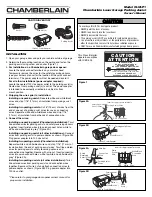
Song Mode
Memory Limits
12-50
MIDI Out port. This is standard MIDI Sync, and any device that accepts MIDI Sync will play in
sync with the K2vx.
If you set the Clock parameter to External, the K2vx expects to receive MIDI Sync at its MIDI In
port. When you play back a song, pressing the
Play
soft button will cue the K2vx to wait for the
sync signal. It will begin playing when it receives the signal, or when you press the
Record
button again. If no sync signal is received, the K2vx uses its internal clock at the tempo of the
current song.
If youÕre using Song mode to capture a sequence that youÕve recorded on an external sequencer,
youÕll want to consider the Clock parameterÕs setting before you record via MIDI. If you have
the Clock parameter set to External, the K2vx will follow the clock of your external sequencer.
As a result, the notes in the song you create will fall regularly on the beats (unless your
externally recorded sequence uses a time signature other than 4/4). This will make it easier for
you to Þnd the notes in the Song Editor. If you set the Clock parameter to Internal, the notes in
the song will not necessarily align with the beats of the measures in the song, but the song will
play back exactly as you recorded it on the external sequencerÑincluding tempo changes you
may have incorporated into the externally recorded sequence. If the Clock parameter is set to
External, tempo changes will not carry over to the K2vx, and will not be heard when you play
back the song.
Finally, keep in mind that when the Clock parameter is set to External, programs that use one or
more of the Clock control sources (see
Reference Guide
) will sync to the external MIDI signals. If
no external sync signal is received, the Clock control sources are disabled.
Memory Limits
While thereÕs no actual time limit to the length of the songs you record, their size is limited to
64K (or to the maximum amount of available free RAM space you have, if itÕs less than 64K).
However, you can create longer songs by recording each section as a separate song, then
putting it together with the Arrange feature. If you run out of RAM space while recording a
song, the recorder stops and prompts you to save the song. ItÕs a good idea to check your free
RAM space before you begin recording a song, and to check the ÒUsedÓ readout as you record.
If youÕve used all the available RAM for recording, you may Þnd that when you go to the Song
Editor to delete a song or edit its tempo, the K2vx tells you that thereÕs not enough memory to
edit. In this case you wonÕt be able to edit any object greater than 4K in size. Objects smaller
than 4K can still be edited, because the K2vx always reserves a minimum of 4K of RAM.
If you want to delete a song and the K2vx wonÕt let you enter the Song Editor, select one of the
Metronome songs. Since the metronome songs are smaller than 4K, youÕll be able to enter the
Song Editor. Press the
Delete
soft button, then use the Alpha Wheel to select the program you
want to delete. Press the
Delete
button again, and the song will be erased, freeing up enough
RAM to edit other songs.
Loading Songs From Disk
If you have a Type 0 (single-track, single- or multi-channel) MIDI sequence Þle stored on an
MS-DOS disk (720K or 1.4 M), you can load it into one of the RAM banks, and the K2vx will be
able to play it from Song mode.
Recording Multi-timbral Sequences via MIDI
You can record sequences from an external MIDI device using Song mode. Program numbers
and MIDI channel assignments of multi-timbral sequences are recorded with the notes. To
record via MIDI, connect the MIDI Out port of your sequencer to the K2vxÕs MIDI In port.
Summary of Contents for K2500RS
Page 12: ...Table of Contents TOC 12...
Page 16: ...Introduction How to use this manual 1 4...
Page 32: ...User Interface Basics The Panel Play Feature K2vxR 3 8...
Page 106: ...Effects Mode and the Effects Editor Configurations and Parameters 9 24...
Page 186: ...Song Mode Recording Multi timbral Sequences via MIDI 12 52...
Page 304: ...DSP Functions Hard Sync Functions 14 52...
Page 394: ...Programs Setups and Keymaps K2500 ROM Keymaps 21 12...
Page 402: ...LFOs LFO Shapes 23 4...
Page 406: ...Note Numbers and Intonation Tables List and Description of Intonation Tables 24 4...
Page 434: ...DSP Algorithms 26 14...
Page 450: ...MIDI and SCSI Sample Dumps SMDI Sample Transfers 29 8...
Page 464: ...Glossary 31 6...
Page 490: ...K2vx Program Farm VOX K25 Appendix A 22...
Page 494: ...K2vx Compatibility Converting programs from the K2vx to K2000 Appendix B 4...
















































